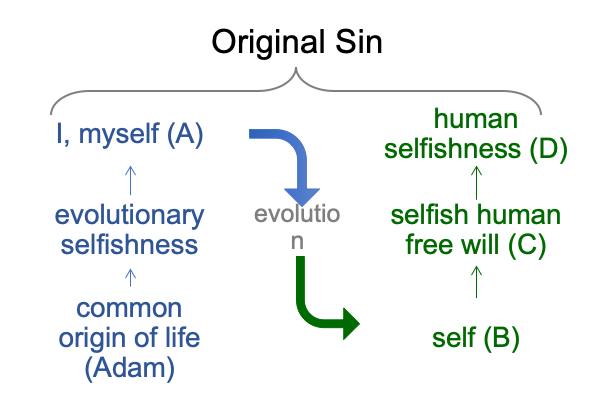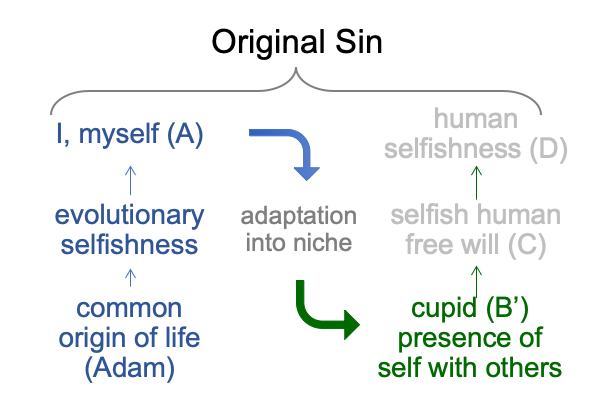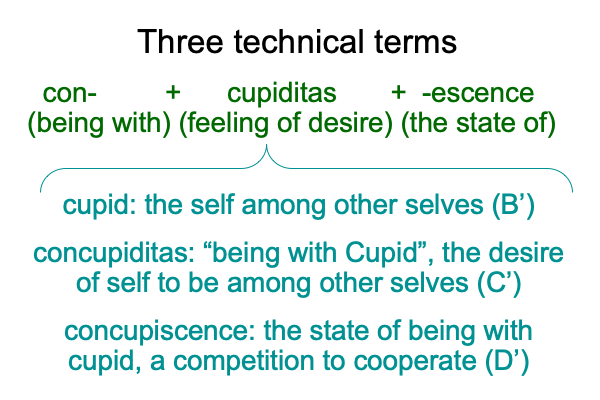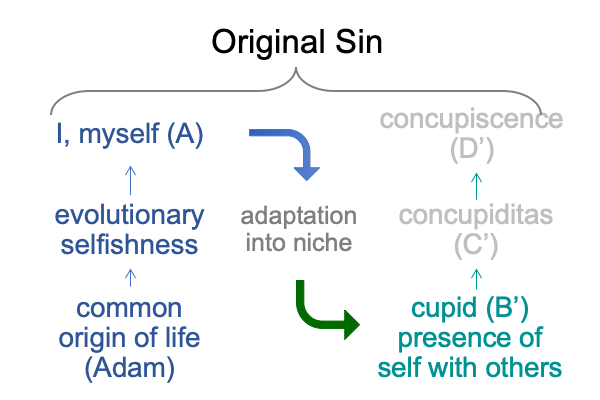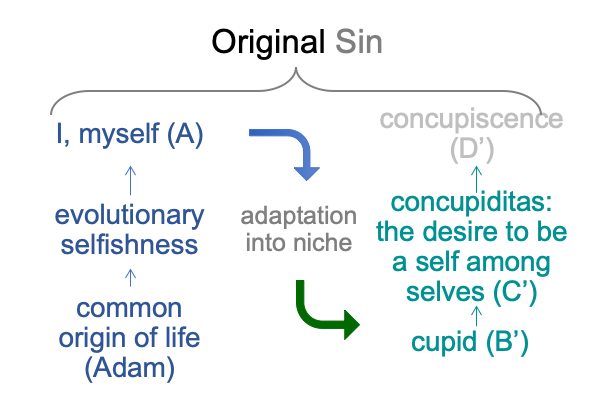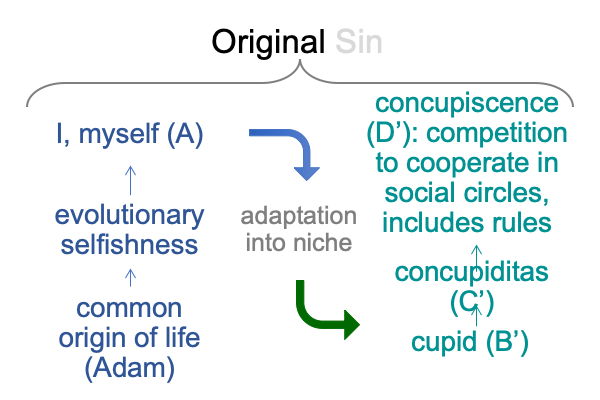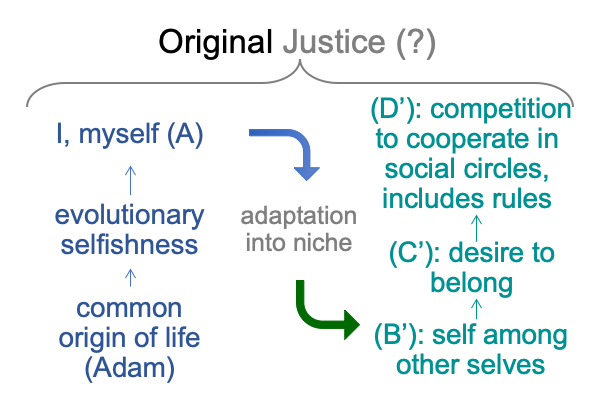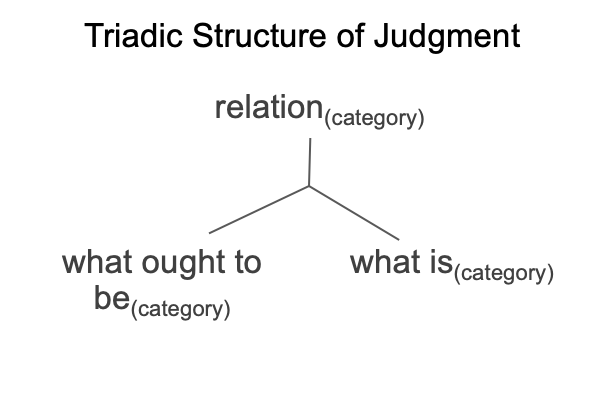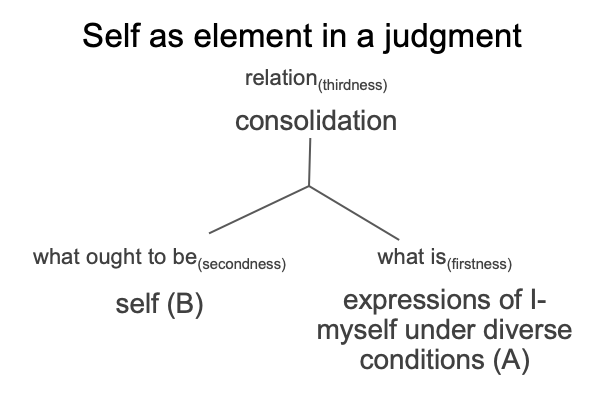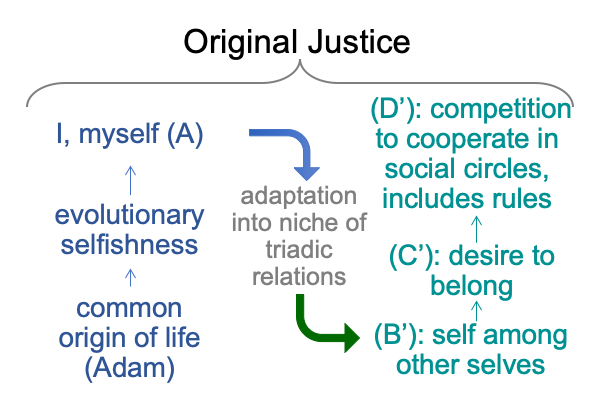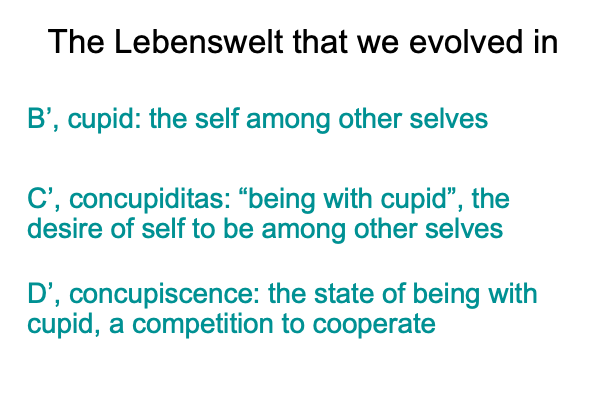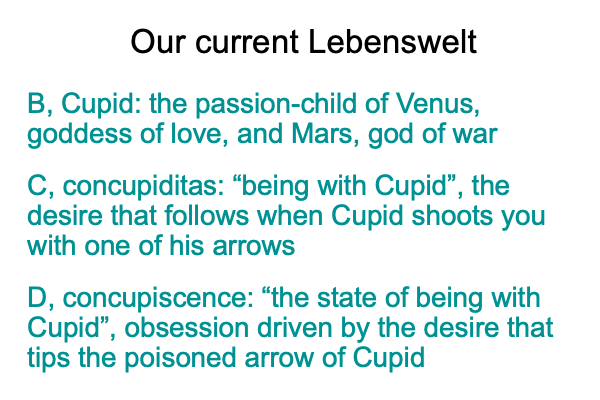Looking at Daryl Domning’s Book (2006) “Original Selfishness” (Part 4 of 16)
0021 Domning’s move is clever, except for a critical implication. There is a sequence of adaptations within the Homo lineage that follows and builds on the primal adaptation into the niche of natural selection and genetics. So, the universal aspect of Original Sin, dealing with descent from a progenitor, and the moral reality of Original Sin, concerning the disordered expression of original selfishness in humans, are not fully separate.
Domning offers a graphic.
Here is my re-enactment of figure 10.1.
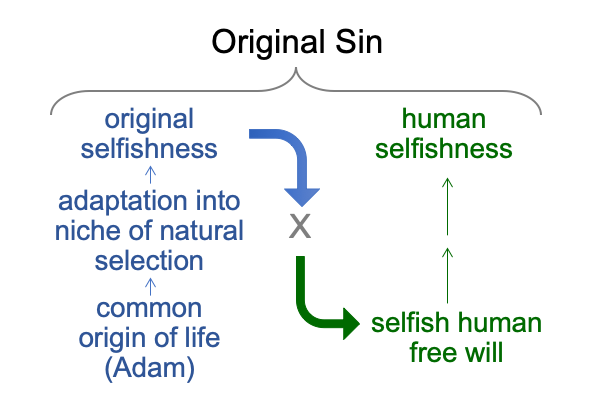
0022 Original selfishness does not implicate moral deliberation. Human selfishness does.
0023 What is “X”?
Domning places the word, “evolution”, here.
I ask, “How can this be?”
How can natural selection eventually yield human free will… er… selfish human free will?
Is selfish human free will an adaptation?
How does the Homo lineage pass from instinctive behaviors to deliberate choices?
0024 I suppose that Domning covers this challenge in chapter nine, titled, “Evolution and human ethics”.
What does he say?
Evolutionary selfishness is one thing, corresponding to adaptation into a niche of natural selection and genetics. Psychological selfishness is a second thing, corresponding to “original selfishness”. Psychological selfishness that intentionally disregards the interests of others is a third thing, corresponding to “human selfishness”.
So, X describes the evolution of psychological states. Selfish human free will, the foundation of human selfishness, evolves from original selfishness.
0025 However, I already am inclined to think that there must be another step, the evolution of self, that enters into the picture. Why? If human free will is to be selfish, then there must already be a self.
Here is a picture.
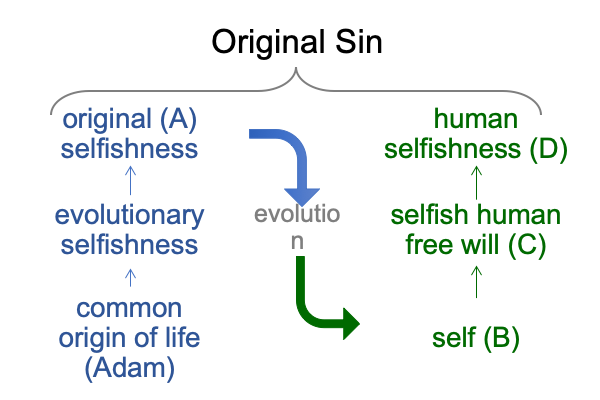
0026 Isn’t that curious?
The four waystations in the historic development of the word, “selfishness”, recapitulates the evolutionary sequence from “original selfishness” to “human selfishness”.
Okay, I immediately wonder, is there another word that also parallels some sort of evolutionary progression, from noun to adjective then back to noun?
Yes, there is.
0027 The term is “concupiscence”.
Concupiscence is a technical term used in theological discussions of the doctrine of Original Sin. It may be derived from Latin roots in more than one fashion.
Here is a picture.
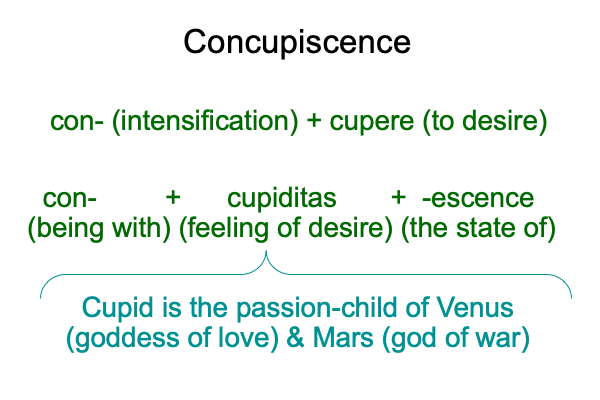
0028 Of course, my preferred derivation is the lower option. To me, “concupiscence” is the state of being with Cupid. Cupid is an implicit abstraction from two features of natural selection: cooperation (Venus) and competition (Mars).
What do I mean by the term, “implicit abstraction”?
In some way, Cupid may be stated in hand talk, in the same fashion that Cupid is portrayed in visual art. PANTOMINE DRAWING A BOW, PANTOMIME ARROW FLYING, POINT TO MY OWN HEART. This fully linguistic statement in hand talk does not make sense, at first. Later, it does.
Cupid is the self, in the presence of other selves.
Cupid shoots arrows of desire, in the presence of other selves.
0029 I ask, “How could hominin awareness of the counterintuitive nature of Cupid evolve?”
This question does not surface in Domning’s chapter on evolution and human ethics.
Ethics among animals is mediated through ritual and emotion. The rules of the game say that cooperation may be necessary for surviving to the next competition.
In contrast, human ethics transcends an animal’s sensible and amoral tendencies. Human ethics demands social construction. Social construction is addressed in the masterwork, How To Define The Word “Religion”, available at smashwords and other e-book venues.

